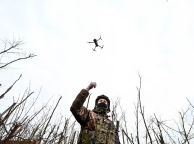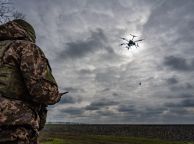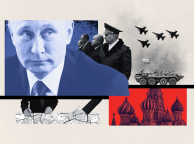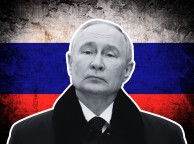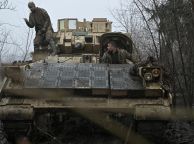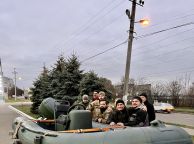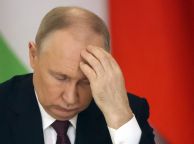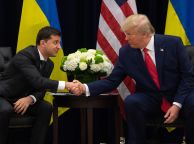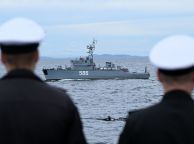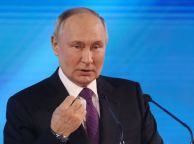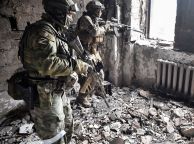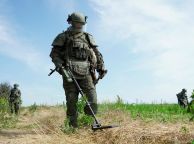By David Brennan
Russia's third year of war will begin in the midst of soaring casualties as its forces press winter offensives at multiple points along the 600-mile front in southern and eastern Ukraine.
January saw 26,220 Russian troops "eliminated," according to collated daily figures published by Ukraine's armed forces, as well as 339 main battle tanks taken out of action.
This makes January the third costliest month for Russian military personnel in Ukraine since the beginning of the full-scale invasion in February 2022. Per Kyiv's data, only December 2023 (29,970 troops) and November 2023 (28,550) were bloodier for the Russians.
The grim monthly figures bring Kyiv's total claimed number of Russian casualties since February 2022 to 386,230, and the total number of tanks destroyed to 6,322. Moscow has also lost 9,195 artillery pieces, 663 anti-aircraft systems and 11,757 armored fighting vehicles, by Ukraine's count.
Newsweek cannot independently verify the figures and has contacted the Russian Defense Ministry by email to request comment.
Ukraine's tallies of Russian losses are staggeringly high, but broadly correspond with estimates from the U.S. military and intelligence officials. In December, Reuters cited classified U.S. intelligence analysis suggesting Russia has suffered 315,000 dead and injured troops in the full-scale invasion.
If accurate, this means Russian casualties are equivalent to almost 90 percent of the total personnel it had when the conflict began in February 2022. Kusti Salm, the permanent secretary at the Estonian Defense Ministry, told Newsweek in December that Moscow was losing "more than 50,000" military personnel every six months.
Russia's offensive efforts, Salm predicted, will continue through 2024 with "a very high attrition rate."
A New York Times report in August cited U.S. officials who estimated the Ukrainian death toll at close to 70,000, with another 100,000 to 120,000 wounded.
Despite spiking losses, Russian troops are again on the offensive in Ukraine, seeking to reverse Ukrainian gains won in summer 2023 and hoping to seize new territory in the eastern Donetsk and Luhansk regions, which are among the four partially occupied Ukrainian regions claimed annexed by President Vladimir Putin in September 2022.
Ukraine's Main Military Intelligence Directorate (GUR) chief, Lieutenant General Kyrylo Budanov, said on Tuesday that despite minor recent successes, the performance of Russian troops on the eastern front has been "nothing even close" to what Moscow envisioned.
"Their offensive continues," he said. "Somewhere at the beginning of spring, it will be completely exhausted."
The Institute for the Study of War has suggested that despite local gains, the Russian formations leading the new offensives around the Kharkiv city of Kupyansk "are unlikely to be able to translate these tactical gains into wider mechanized maneuvers needed for operationally significant advances that could capture more territory in Kharkiv Oblast and push to the Luhansk and Donetsk oblast administrative borders."
Pavel Luzin, a Russian military analyst and visiting scholar at the Fletcher School of Law and Diplomacy, told Newsweek that Moscow's grinding, high-casualty offensives are a reflection of the military's lack of options following nearly two years of punishing combat.
"They just don't have other options to execute the orders," he said. "And, of course, they don't have the guts to tell the Kremlin that the war cannot be won and must be ended."
Observers have suggested the Kremlin intends to stabilize and slightly expand its partial occupation of the Ukrainian Luhansk, Donetsk, Zaporizhzhia, and Kherson through 2024, as it seeks to outlast Kyiv and its Western partners.
"Stabilizing the lines is an impossible goal," Luzin said. "Ukraine's goal is not liberation of the territory. Ukraine's goal is the elimination of the military threat from Russia, and the liberation of territory would be only a sequence of the main goal."




